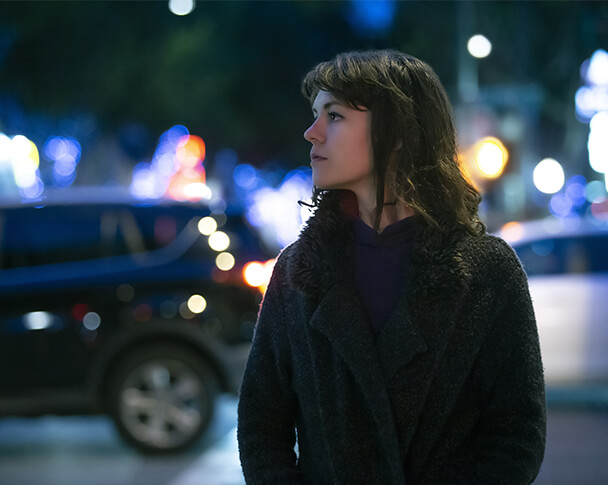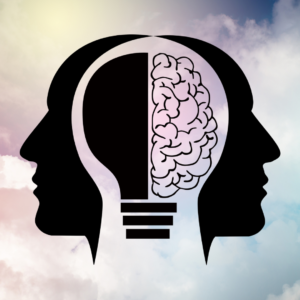Characterized by episodes of depression and mania or hypomania, bipolar disorder has the ability to severely disrupt a person’s life. According to the National Institute of Mental Health, rarer than depression and anxiety, bipolar disorder affects about 2.9% of people and 83% of patients met the criteria for “serious” bipolar disorder.
The diagnostic criteria for bipolar disorder vary, as there are different types. Some people may only have a few manic episodes in their life, making it hard to make the diagnosis without a good psychological history. On the other hand, others may experience primarily manic episodes with few depressive episodes.


Bipolar Disorder Treatment in Riverside, CA
People with bipolar disorder experience episodes of both depressed and elevated moods. During a depressive episode, the person may experience most of the typical depression symptoms. On the other hand, during a manic episode, a person may experience other symptoms such as:
- Lack of need for sleep
- Grandiose thoughts and plans
- Risky behaviors
- Spending excessively
- Making sudden rash decisions
- Dangerous sexual behaviors
- Euphoric or agitated mood
Bipolar I Disorder
To be diagnosed with Bipolar I, an individual must experience at least one manic and one depressive episode.
Manic episodes may cause damage in a person’s life and become so severe the person requires hospitalization. People experiencing manic symptoms may meet the criteria for psychosis, meaning they have become dangerously irrational and require immediate medical treatment. The presence of full mania distinguishes Bipolar I from other types of bipolar disorder.
Bipolar II Disorder
People with this type of bipolar have never had a full manic episode.
Instead, they experience episodes of hypomania, a less intense type of mania. They may have many of the same symptoms but not at the same level. Those diagnosed with Bipolar II may have more frequent depressive episodes than those with Bipolar I, and the disorder may be misdiagnosed as depression.
Cyclothymic Disorder
People with this diagnosis have depressive and hypomanic symptoms but not intense enough to meet the criteria for Bipolar I or Bipolar II.
According to the National Institute of Mental Health, this cycle must have been present for at least two years. Cyclothymia is considered a chronic low-grade type of bipolar disorder that can make life more challenging and less enjoyable.
How is Bipolar Disorder Treated?
Research by the National Institutes of Health indicates that bipolar disorders show much more improvement with medication and therapy than therapy alone. The typical selective serotonin reuptake inhibitors (SSRIs) that work well for many other mental health disorders are not used in bipolar disorder since they can trigger manic episodes.
Medication management for bipolar disorder often requires trying several different combinations to find the ideal one. Drugs used may include:

- Lithium
- Lamotrigine
- Atypical antipsychotics
- Older antipsychotics
People with bipolar disorder benefit from a combination of medication and therapy. However, this can present particular problems for people with this disorder. During manic episodes, people may feel great and not want any medications to ruin the good feeling, or they may not feel the need to keep their therapy appointment.
Many types of talk therapy work to effectively treat bipolar disorder. The focus will often be on symptom control, tracking behaviors and lifestyle changes to watch for triggers, and coping with the problems their disorder causes. Common types of therapy used to treat bipolar disorder include:
Cognitive-Behavioral Therapy (CBT)
This therapy helps people challenge their negative thoughts during depressive episodes, and if the person participates, it can help them see how irrational their manic thought patterns appear. CBT can help people change behaviors to decrease triggers for mood changes.

Acceptance and Commitment Therapy (ACT)
Mindfulness can help anyone who needs tools to deal with a life that often feels overwhelming. People with bipolar disorder need to learn how to accept thoughts about their disorder and how to move past them. They can also benefit from committing to therapy since they may be inconsistent clients.

Complementary Therapies
As with many disorders, most people can benefit from participating in alternative therapies like music, art, yoga, and exercise combined with traditional therapeutic modalities. These therapies provide a release from stress and help people communicate their feelings.
A therapist or doctor may ask people with bipolar disorder to track events and behaviors to see if any trigger more episodes. Life changes such as a new job or a break up with a partner can act as major triggers for a manic or severe depressive mood. Possible triggers include:

- Poor diet
- Lack of or inconsistent sleep
- Physical illness
- Work or social problems
- Seasonal changes
- Other life events
Bipolar Disorder Treatment at Everlast
Everlast Recovery Centers offers treatment for clients diagnosed with bipolar disorder. With regular visits from a doctor throughout your stay, you can begin the process of trying medications while you receive daily therapy throughout your treatment. Clients with bipolar disorder can also engage in different types of therapeutic modalities and find the one that feels the most beneficial for their treatment.

At Everlast, we help our clients build strong, solid routines of medication management and daily tracking to learn the most about their diagnoses throughout their treatment stay. Our safe and caring residential facility along with our clinically trained staff allows our clients to feel comfortable talking about their mood changes and the consequences of their disorder. At Everlast, you can be sure to find your path to healing and recovery.





